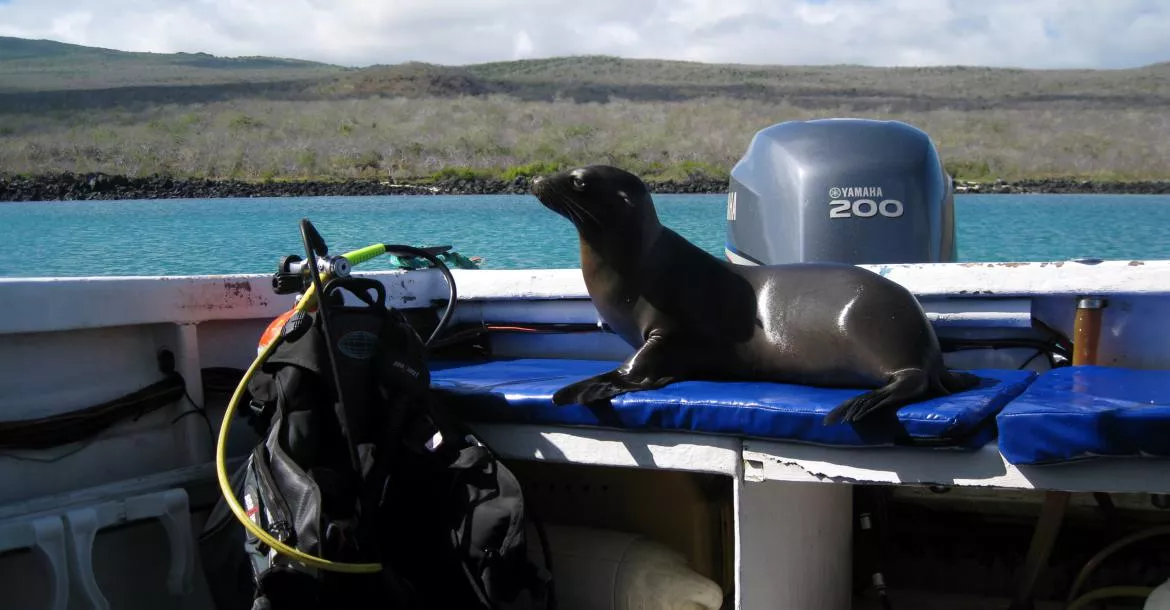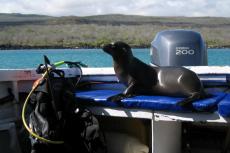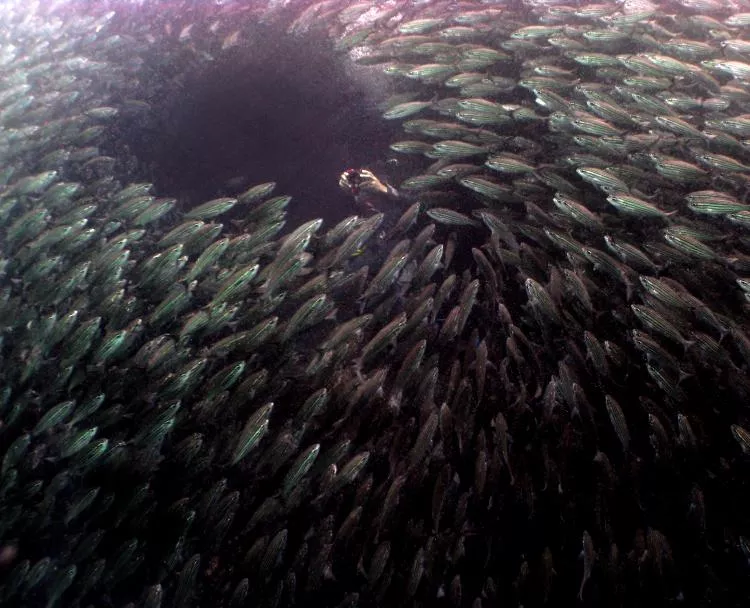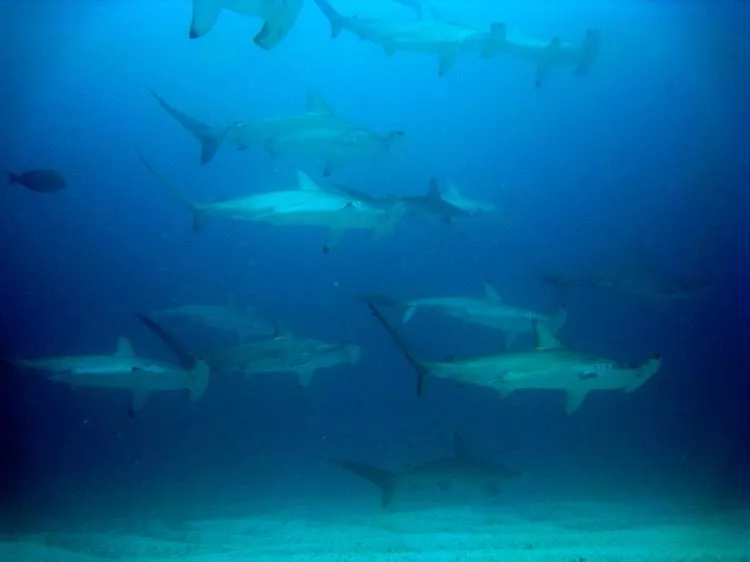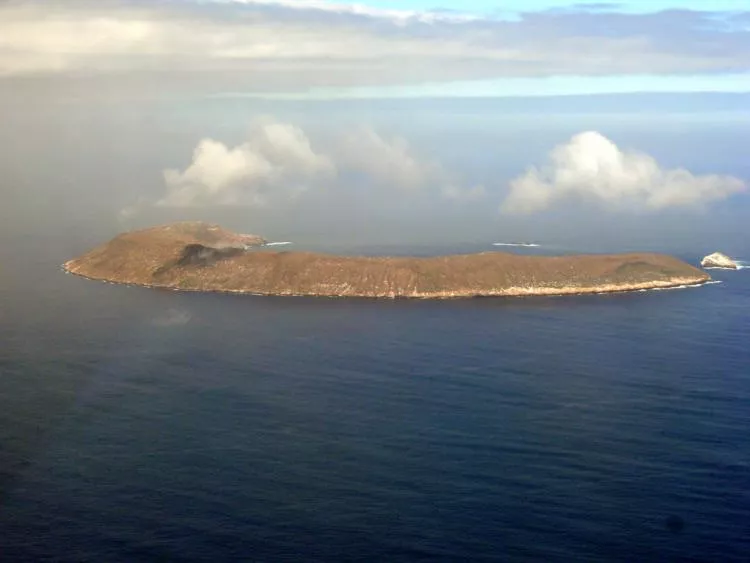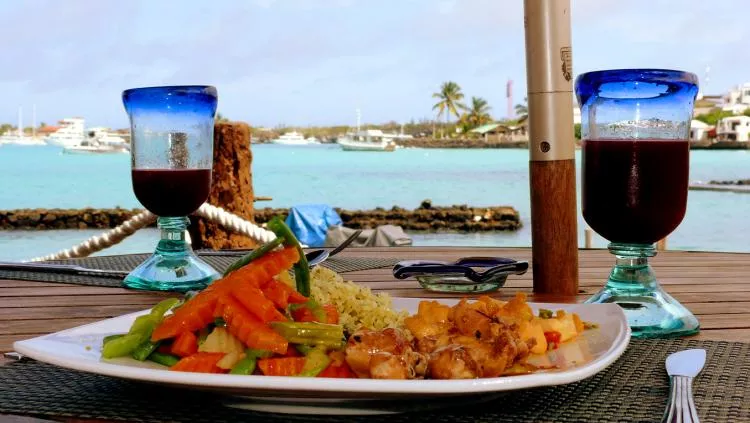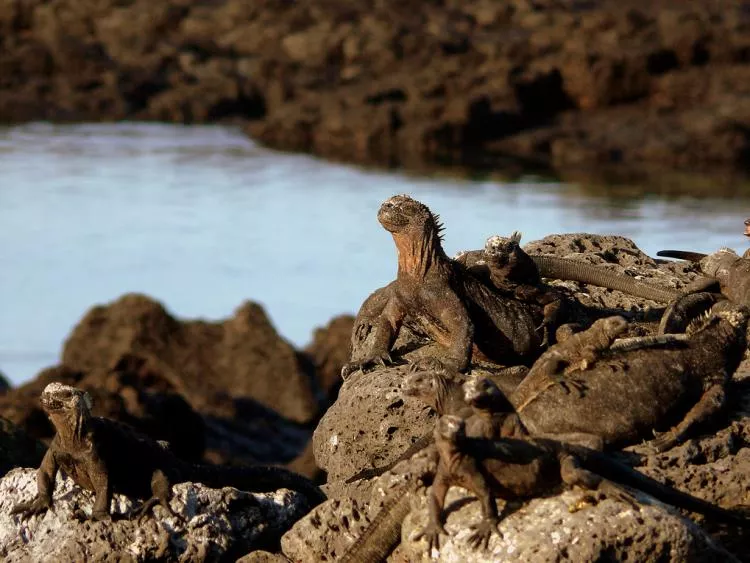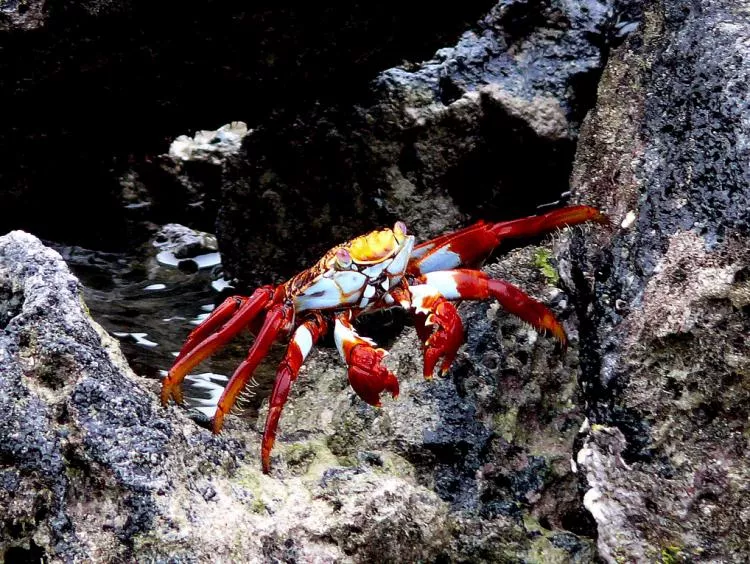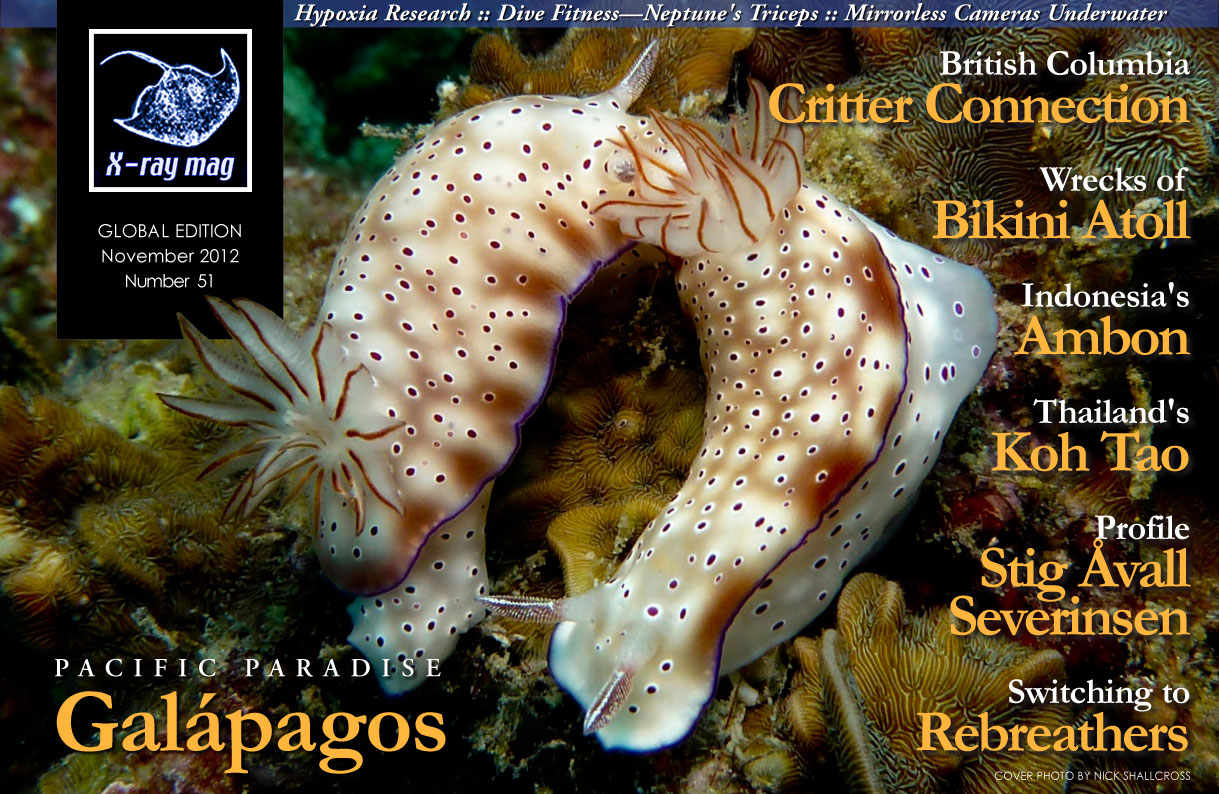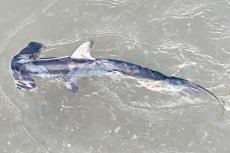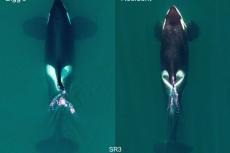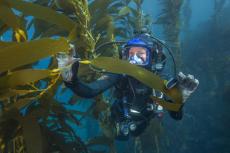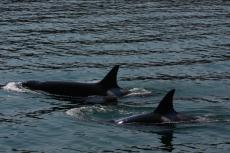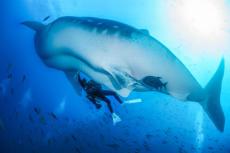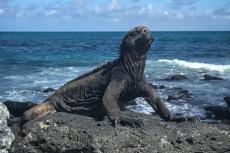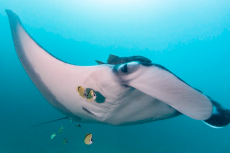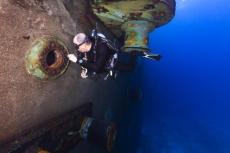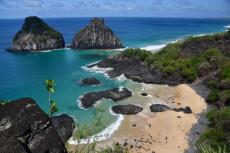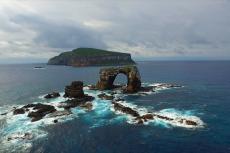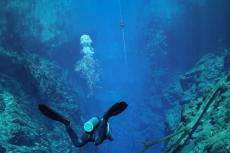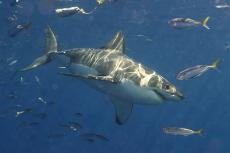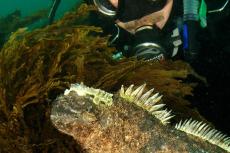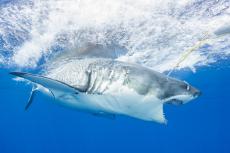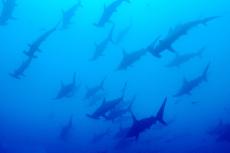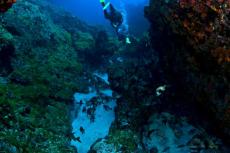Unlike Max in the children’s book by Maurice Sendak, Where the Wild Things Are, I hadn’t worn my wolf suit, or made mischief of one kind or another. I hadn’t been sent to my room before it transformed into an island of magical monsters only reachable after a year of sailing.
I wouldn’t want to spend that long on a boat, so I behaved(ish) and looked forward to being on Galápagos and spending my nights tucked up on dry land.
Contributed by
My dive buddy Simon’s left arm shot out, index finger extended, and he clenched his right fist and stuck it on the side of his head. I quickly scanned left and right, peering through my mask into the milky blue water. “Where?! Where?!” my brain implored. “There!!!” my eyes answered.
“At last,” I smiled to myself with relief, bringing my camera up to eye level, as the school of scalloped hammerhead sharks cruised past ten metres away, swaying over the sandy bottom of the underwater caldera in the middle of the site called Gordon Rocks off Santa Cruz Island in the Galápagos archipelago.
I now knew what Gordon certainly did, providing me and many other divers over the years with their first sightings of this oddly but brilliantly-shaped fish.
In the past, I’d searched for hammerheads in the Red Sea and in South Africa—five blue dives there, with a solitary, faint blur as my sole reward. Upon arrival in the Galápagos, they were on the top of my fish wish list. They are one of the emblematic Galápagan species after all. The T-shirt shops of Puerto Ayora on Santa Cruz—the most inhabited island of the archipelago—were draped with them, along with the giant tortoise, which constitutes the logo of the Galápagos National Park.
Yet, I had been on Galápagos for a week now (with Gordon Rocks still to come) investigating land-based diving and nature tours on offer by Red Mangrove’s suite of luxury lodges, and all I’d seen were some tacky miniatures and gaudy prints of the elusive hammerhead. In terms of diving, the best had definitely been saved for last—at Gordon Rocks. Not that the rest of the diving had been poor; we’d just been a bit unlucky with the hammerheads.
On Red Mangrove’s land-based island-hopping diving itinerary, Gordon Rocks is normally the first or second dive destination. But due to a last-minute flight cancellation, my partner, Imi, and I missed Gordon Rocks on what should have been our first day of an eight-day tour. Still, we planned to have plenty of days to spare on Santa Cruz later, so we set off to explore diving from Puerto Ayora and arranged to catch up with Gordon Rocks at the end.
At the time, I also thought that I was on a bit of a lucky streak; I was randomly upgraded to first class on the flight to Guayaquil to meet up with Imi, and we were both upgraded for the two-hour A320 Tamé flight to Isla Baltra. Then, we were greeted with cool water and chilled face towels by our escort. This certainly enhanced the good vibe, as did the friendly banter with our guide on the 200m ferry ride and 42km drive across Santa Cruz Island.
By the time we had checked into our funky room just metres from Puerto Ayora’s gently lapping bay, we had seen marine iguanas basking on the restaurant deck, photographed a sea lion snoozing in the shade on a coffee table, and eaten some tender calamari and chicken with perfectly steamed veggies. Naturally, we were feeling pretty positive.
A post-lunch trip to snorkel with some sea lions resulted in a couple of half-decent shots. Then, a boat ride to the white sands of Tortuga Bay on Santa Cruz Island and a guided nature walk to see the marine iguanas, Sally Lightfoot crabs and large cacti growing from volcanic rocks kept us happy and did nothing to dampen the feeling that everything would just fall perfectly into place—the late flight cancellation and re-jigged schedule being just a minor blip.
After a brief meeting with our dive guide for the following day and a candlelit dinner, I was rocked to sleep by the wash of the ocean, dreaming about big fish with funny heads.
Diving
Sante Fé Island. The next morning, we left the busy cargo ships, numerous moored liveaboards and plentiful small craft of Puerto Ayora behind. On the boat ride out to Sante Fé Island, we were regaled with the previous day’s missed sightings at Gordon Rocks of a manta, eagle rays, stingrays, whitetip reef sharks, and of course, hammerhead sharks. Then, a reef manta breached to one side of the boat, as if to say, “Come on, jump in, we’re waiting for you!”
Except they weren’t. Nature, of course, works on its own schedule. Even so, on our first dive of the trip, there was a six-meter cave swim-through as well as a group of silvery grunts and a school of barracuda in the distance. “Never mind,” I thought, “It was fine for a return to the water.”
But I was a little disappointed. I had expected the 10-15m visibility and the bare rocky underwater landscapes. (The Galápagos are located on the Equator in the Pacific Ocean, but due to the cold waters of the passing Humboldt current coming up from the south, the water temperature drops to the low 20s, which is too cold for much coral growth.) But, I had also expected more action.
I guess it comes down to individual expectations. Maybe I’d misread the hype. I was expecting the big stuff: sharks, big schools of fish and classrooms of rays, turtles, sea lions and marine iguanas. Yet, our boat companions—two fellows from Quito doing Discover Scuba dives and their two open water dive buddies—naturally thought the whole experience had been grand.
La Loberia, San Cristobal Island. During the surface interval, we motored back towards Puerto Ayora and dived at a shallow site called La Loberia (lobo del mar is a sea lion in Spanish). The viz was at most ten metres and full of fish poo, but we soon saw why we were here. This was the site of a sea lion colony and nursery.
Two sea lions dived down from ....
(...)

